Is Plant-based Cat Food a Safe Choice for Your Cat?
You went vegan for the animals, so now you’re staring at your cat’s bowl wondering if Mr. Whiskers should join the revolution too. Don’t worry—every vegan cat parent has been there, Googling “plant-based cat food” at 2am while questioning their life choices.
Here’s the thing: cats are obligate carnivores, which basically means they’re furry little meat addicts by design. Your good intentions won’t override millions of years of evolution, no matter how much you want Fluffy to share your ethical awakening.
But before you panic or start meal-prepping mouse tartare, let’s talk facts. **Plant-based cat food** exists, and some cats actually do okay on it—with serious vet supervision and regular blood work. Others turn into hangry demons who plot your demise while vitamin deficiencies slowly wreck their organs.
We’ll cut through the internet drama and give you the real deal on vegan cat diets. No judgment if you decide meat-based food is the way to go—your cat’s health trumps dietary purity every time.
How Plant-Based Cat Food Differs from Human Vegan Diets
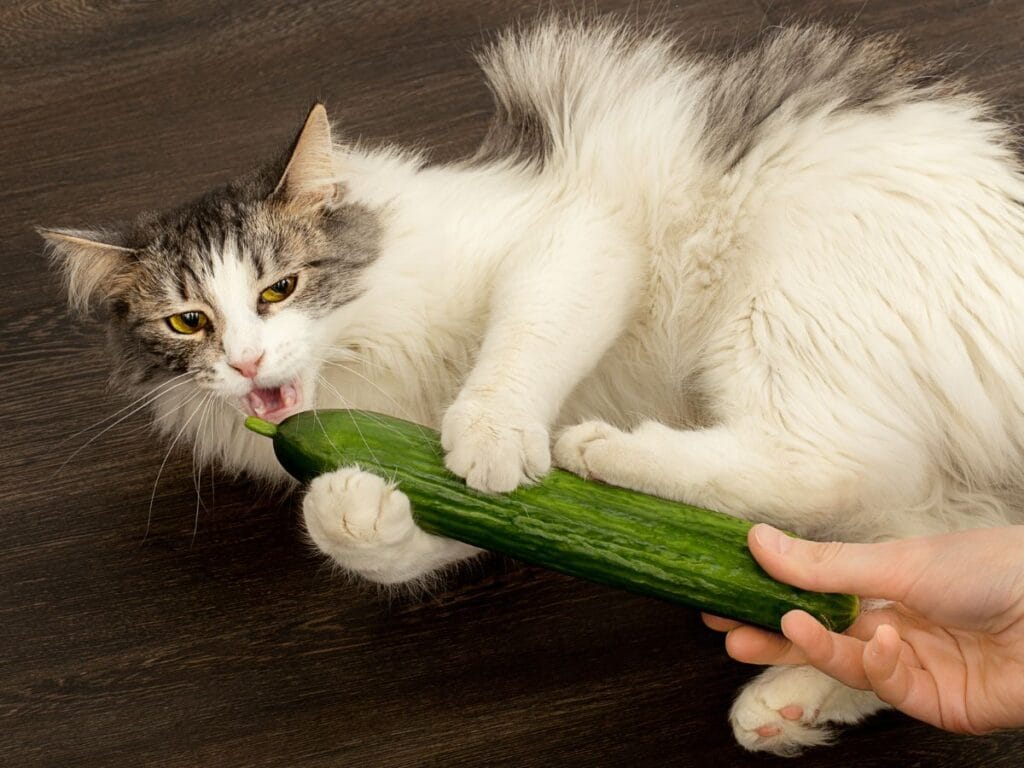
If you’re thinking of feeding your cat a salad with beans and tofu, the answer is a firm no. Your quinoa bowl won’t cut it for Mr. Whiskers.
Cats are obligate carnivores – they’ll literally die without meat nutrients. While dogs might survive on your leftover lentils (don’t try it), cats are pickier than a toddler at dinnertime and need actual meat-based diets.
Don’t assume your cat can thrive on what works for you. You chose this lifestyle; your cat didn’t sign up to be your dietary experiment.
How Nutrient Fortification Makes Plant-Based Cat Food Complete
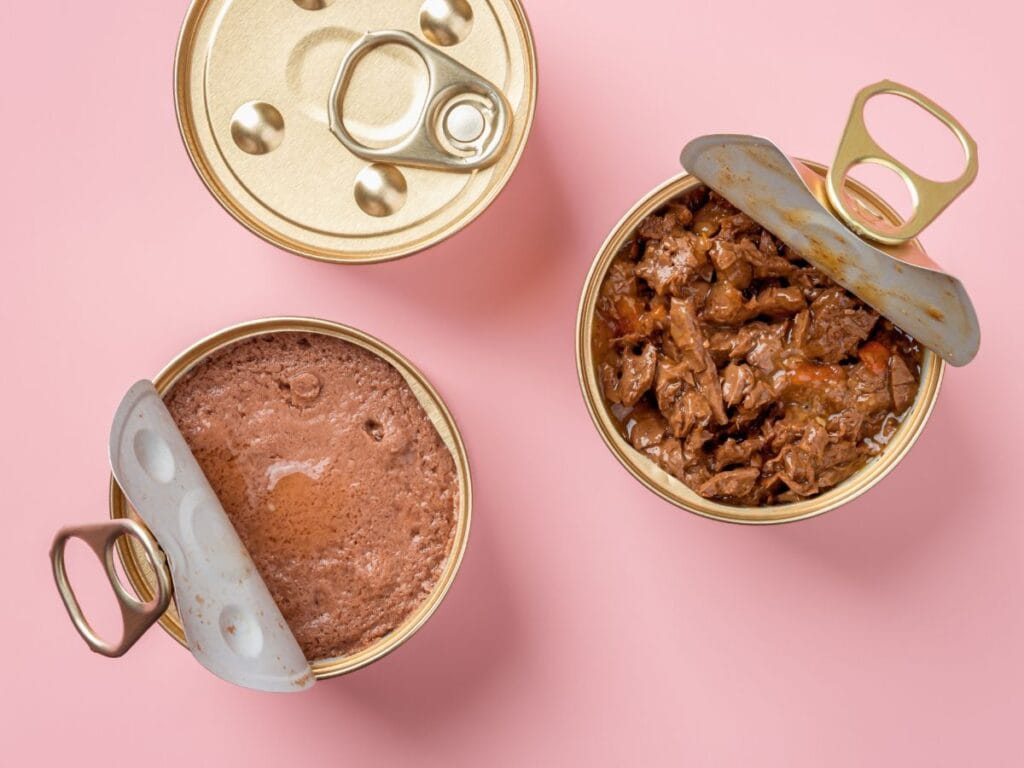
Forget the fillers and mystery meat – reputable plant-based cat food brands actually know what they’re doing. They strip out the junk and add back every nutrient your cat needs to not keel over.
These foods get fortified with synthetic versions of meat nutrients like taurine, vitamin A, and arachidonic acid. It’s basically science fixing what nature made complicated for carnivores.
Your cat needs specific stuff to survive – high-quality protein for muscle maintenance, taurine so their heart doesn’t fail, and vitamin A because they can’t make it from carrots like you can. They also need vitamin B12 and arachidonic acid, which normally only come from animal sources.
Here’s the thing – good plant-based cat food meets all these requirements through fortification. It’s not just throwing vegetables in a bowl and hoping for the best. The nutrients are there; they just took a different route to get into the kibble.
Understanding Ingredients in Plant-Based Cat Food
Best Ingredients in Plant-Based Cat Food (Highly Digestible & Nutritious)
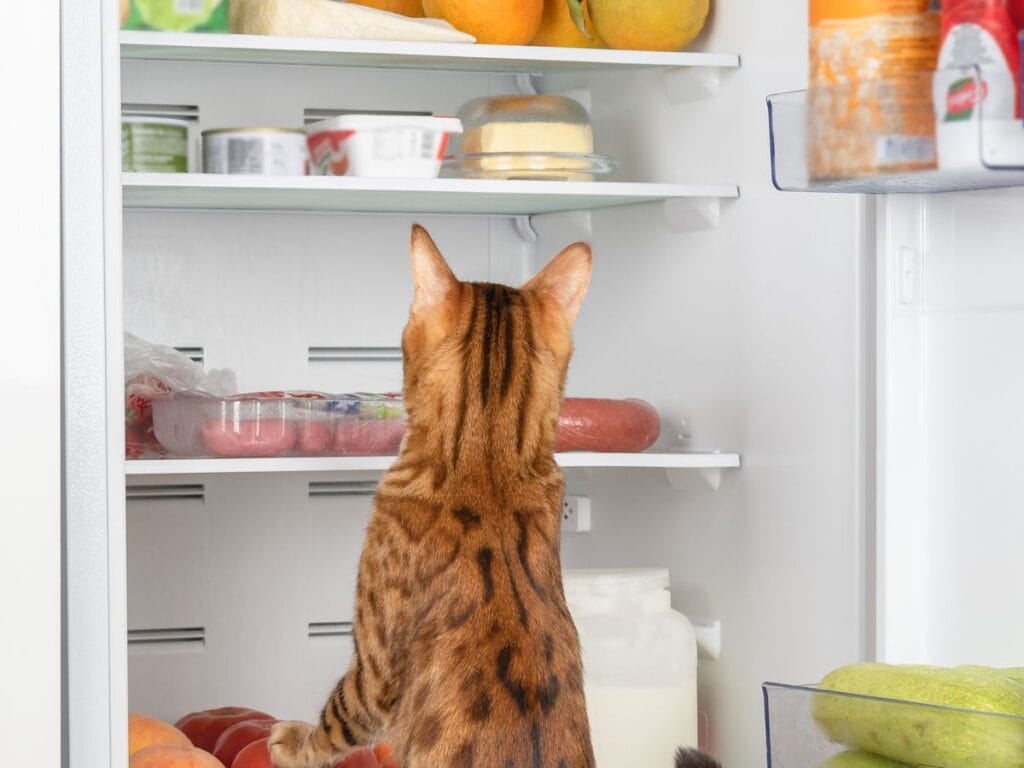
- Real Meat (e.g., Chicken, Turkey, Beef, Lamb, Salmon)
- Why it’s good: High in animal protein, essential for obligate carnivores like cats. Provides essential amino acids, including taurine.
- Concern: Look for specific named meats rather than generic terms like “meat” or “meat meal.”
- Meat Meal (e.g., Chicken Meal, Turkey Meal)
- Why it’s good: A concentrated source of protein made from real meat, with moisture removed.
- Concern: Ensure the source is named (e.g., “chicken meal”) to guarantee quality.
- Organ Meats (e.g., Liver, Heart)
- Why it’s good: Rich in vitamins, minerals, and essential fatty acids. Highly nutritious and natural for cats.
- Concern: Should not be the main ingredient, as excessive amounts can lead to imbalances.
- Eggs
- Why it’s good: Highly digestible source of protein, rich in amino acids, vitamins, and minerals.
- Concern: No major concerns; eggs are generally a high-quality ingredient.
- Fish Oil (e.g., Salmon Oil, Cod Liver Oil)
- Why it’s good: Provides omega-3 fatty acids (EPA and DHA), which are essential for skin, coat, and brain health.
- Concern: Avoid excessive use due to potential contamination with heavy metals and other toxins.
- Whole Grains (e.g., Brown Rice, Oatmeal)
- Why it’s good: Provides fiber, vitamins, and minerals, though less essential for cats compared to protein.
- Concern: Cats are carnivores, so grains should not be a primary ingredient.
- Vegetables (e.g., Sweet Potatoes, Carrots, Peas)
- Why it’s good: Provides fiber and natural vitamins, though not essential for cats.
- Concern: Vegetables should be limited and not a primary ingredient in cat food.
Acceptable Ingredients in Moderation
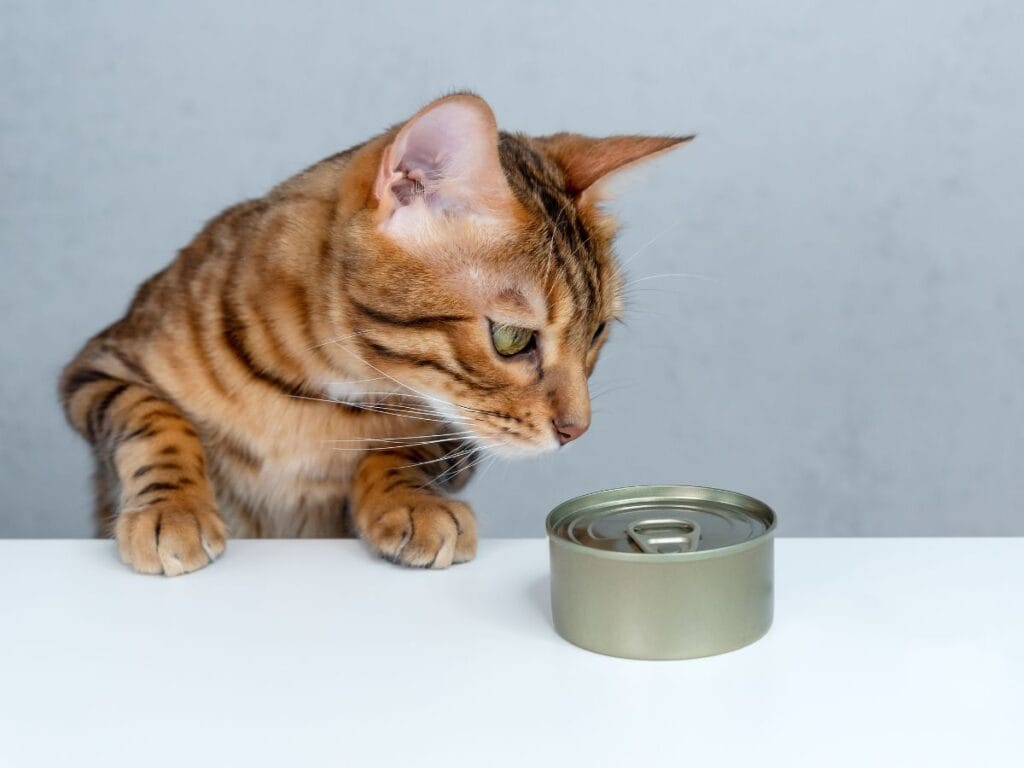
- Animal By-Products (e.g., Chicken By-Product Meal)
- Why it’s okay: Can provide valuable nutrients but is less desirable than whole meat or meat meal.
- Concern: Quality varies, and it can include less digestible parts like beaks and feathers.
- Grain By-Products (e.g., Corn Gluten Meal, Wheat Gluten)
- Why it’s okay: Provides protein and fiber but is less digestible and lower in nutritional value than whole grains.
- Concern: Often used as a cheap filler, which can lead to food allergies or sensitivities.
- Soy Protein
- Why it’s okay: A plant-based protein that can supplement animal protein.
- Concern: Cats have difficulty digesting plant proteins, and soy can cause allergies.
Ingredients to Minimize or Avoid in Plant-Based Cat Food

- Artificial Colors and Flavors
- Why it’s bad: Adds no nutritional value and may cause allergic reactions or behavioral issues.
- Concern: Indicates a lower-quality product aimed at appealing to humans rather than being nutritious for cats.
- Preservatives (e.g., BHA, BHT, Ethoxyquin)
- Why it’s bad: These chemicals are used to extend shelf life but are linked to potential health risks, including cancer.
- Concern: Look for natural preservatives like mixed tocopherols (vitamin E) instead.
- Sugar and Sweeteners (e.g., Corn Syrup, Caramel)
- Why it’s bad: Adds no nutritional value and can lead to obesity and diabetes.
- Concern: Cats don’t need sugars, and it can be a sign of low-quality food.
- Bone Meal
- Why it’s bad: Provides calcium and phosphorus but can be poorly processed, leading to imbalances and contamination.
- Concern: Quality and safety can vary greatly.
- Animal Fat (Unnamed Source)
- Why it’s bad: Can provide energy and flavor but is often of unknown origin and lower quality.
- Concern: Look for named sources of fat (e.g., “chicken fat”) for better quality assurance.
Controversial or Debated Ingredients in Plant-Based Cat Diets
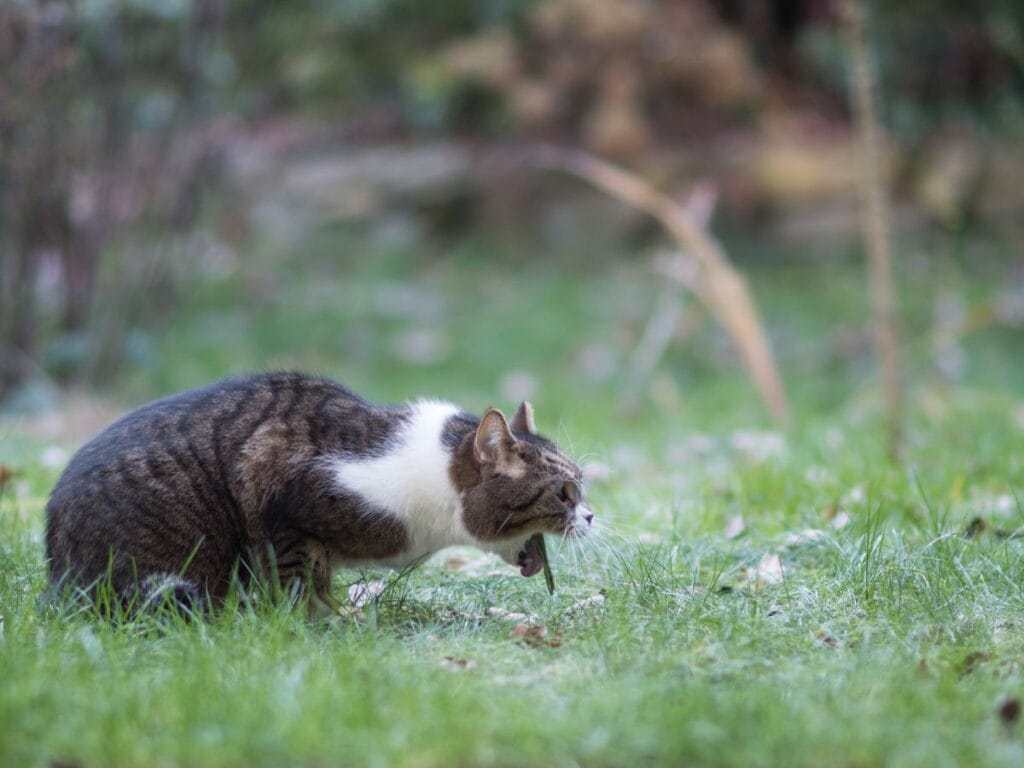
- Carrageenan: A common thickener in wet cat food that has been linked to gastrointestinal inflammation and cancer.
- Cellulose: Often used as a fiber source, cellulose is an indigestible plant material that provides little nutritional value and can dilute the quality of the food.
- Corn and Wheat: These are common allergens for cats and can contribute to digestive issues. They are often used as cheap fillers.
Is Plant-Based Cat Food Healthier Than Meat-Based Cat Food?

Here’s the truth – not all cat food is created equal, and some regular brands are basically junk food with a fancy label. Cheap meat-based options loaded with corn fillers might actually be worse than quality plant-based alternatives.
High-end traditional brands get their vitamins from quality meat sources naturally. Plant-based cat foods rely on synthetic vitamins to do the same job. Both can work if done right.
If you’re choosing between bottom-shelf mystery meat kibble and a well-formulated plant-based option, go plant-based. Your cat won’t know the difference, but your conscience might.
But here’s the reality check – we don’t have decades of research on vegan cats yet. A 2023 study found some plant-based cat foods meet nutritional requirements, but long-term effects are still question marks. Most vets recommend caution because nutrient absorption can be tricky with synthetic alternatives.
The bottom line? It’s not automatically healthier just because it’s plant-based. Quality matters more than the protein source.
Addressing Natural Carnivore Instincts in Cats on a Plant-Based Diet
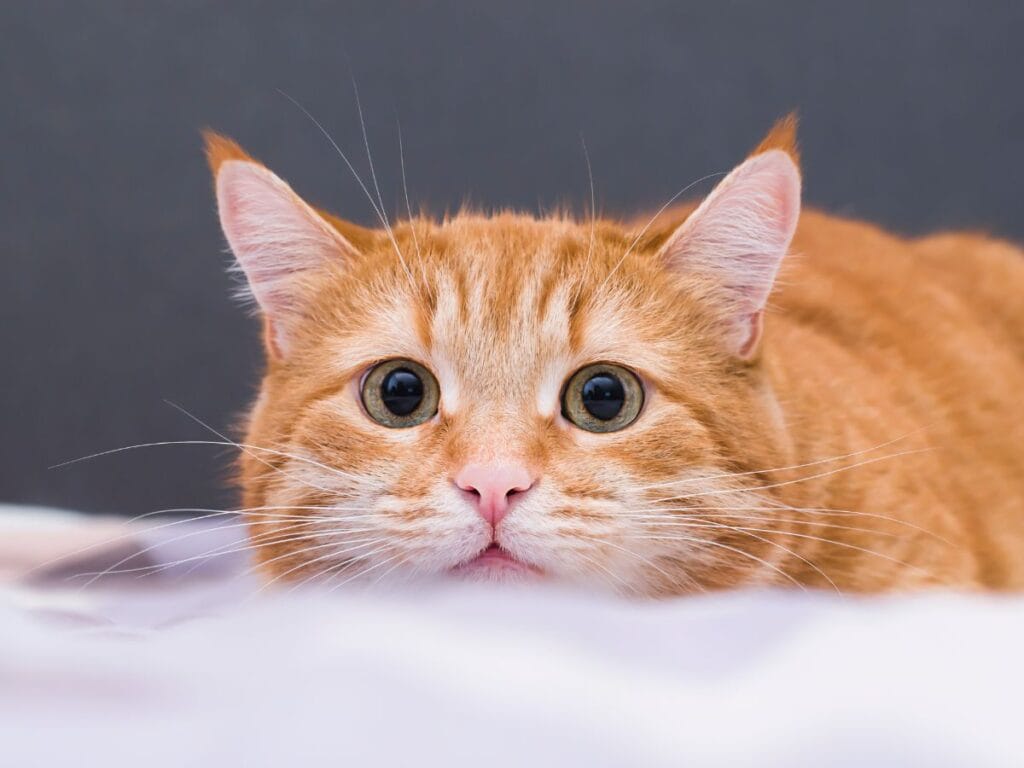
All cats possess hunting instincts, and research shows that even well-fed domestic cats will pursue prey when given the opportunity. This behavior isn’t just about hunger – it’s deeply encoded in their DNA.
Studies found that domestic cats retain about 95% of their wild ancestors’ hunting behaviors. Your pampered house cat is basically a tiny lion who’s forgotten how to survive outside.
Here’s what plant-based cat food can’t fix – your cat will still stalk that red dot like their life depends on it. They’ll bring you dead mice as “gifts” whether they’re eating kibble made from chicken or chickpeas.
The hunting drive doesn’t disappear just because dinner comes from a different source. Plant-based diets feed their bodies, but those predator instincts stay hardwired. Your cat doesn’t know they’re eating synthetic taurine instead of mouse hearts.
Some owners worry this creates an internal conflict – carnivore brain, herbivore bowl. But cats don’t philosophize about their food sources like you do. They just want something that tastes good and keeps them healthy.
The real question isn’t whether plant-based food changes their instincts. It’s whether it can satisfy their nutritional needs while you satisfy your ethical ones.

How to Safely Test Different Plant-Based Cat Food Options
Cats can be finicky, often changing their preferences faster than a teenager picking an outfit. While you want to provide the most nutritious food within your budget, it’s also important to find something your cat will actually eat.
Don’t just switch foods cold turkey – you’ll end up with a hungry, angry cat and expensive kibble going to waste. Mix the new plant-based food gradually with their current food over 7-10 days. Start with 25% new food, then 50%, then 75%, until you’ve fully transitioned.
Buy small bags first, not the bulk size that seemed like such a good deal. Your cat might take one sniff and walk away in disgust, leaving you with 20 pounds of rejected kibble.
Watch for digestive issues during the switch – loose stools, vomiting, or refusal to eat means slow down the transition. Some cats need two weeks to adjust, especially if they’re switching from meat-based to plant-based options.
Test various high-quality plant-based brands to see what your cat actually likes. What works for your neighbor’s cat might make yours turn their nose up and give you the stink eye. Keep notes on what they love, tolerate, or completely reject – because you’ll forget which brand caused the bathroom disasters.
Tips for Transitioning Your Cat to Plant-Based Food Successfully
If you decide to switch your cat to a plant-based diet, consider these tips:
Consult a veterinarian first – Don’t wing this one. Your cat’s health isn’t worth experimenting with based on internet advice alone.
Gradual transition over several weeks – Rush this and you’ll have a sick cat refusing to eat anything. Start slow, mix foods gradually, or prepare for digestive chaos.
Choose quality plant-based cat food with AAFCO certification – This ensures the product meets minimum nutritional standards. Skip the boutique brands without proper testing unless you enjoy expensive vet visits.
Monitor your cat’s health obsessively – Watch their energy levels, coat condition, litter box habits, and eating behavior. Any changes mean you need to adjust or bail on the transition entirely.
Keep their old food handy – If the transition goes sideways, you’ll need a backup plan that doesn’t involve your cat going on a hunger strike. Don’t throw out the old kibble until you’re sure the new stuff is working.
Document everything – Track what they eat, how much, and any health changes. Your vet will thank you for actual data instead of “they seem fine, I guess.”
Potential Benefits of Plant-Based Cat Food
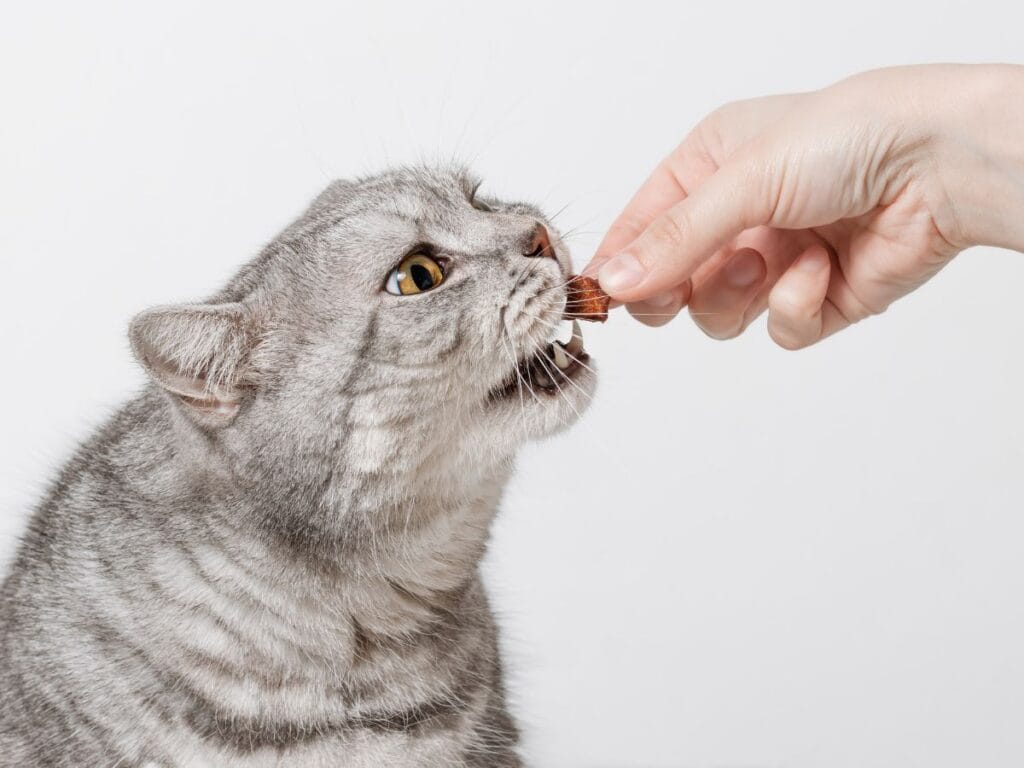
Feeding your cat a plant-based diet can offer several benefits:
- Reduced exposure to hormones and antibiotics: Many conventional meat-based cat foods contain these substances.
- Environmental impact: Feeding a cat a vegan diet could reduce the carbon footprint associated with traditional meat-based pet food. According to a 2022 report by Pet Sustainability Coalition, pet food production accounts for approximately 25-30% of the environmental impacts of meat production in the U.S. alone
- Alignment with vegan values: Feeding your cat a plant-based diet can reflect your lifestyle choices.
- Potential reduction in certain food allergies
- Lower levels of environmental contaminants
Potential Risks and Challenges of Plant-Based Cat Food
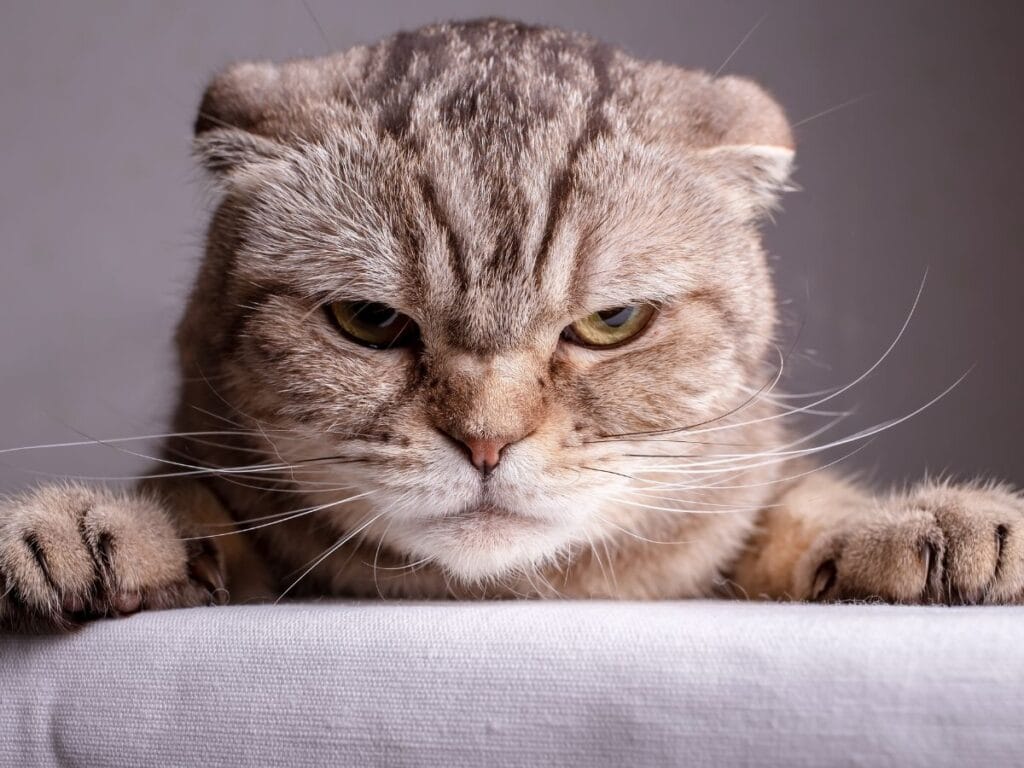
However, there are challenges to consider:
- Nutritional deficiencies: Cats may not get all the nutrients they need from a vegan diet.
- Resistance from veterinarians: Some may not support vegan diets for cats.
- Potential digestibility issues
- Risk of urinary tract problems
- Challenges maintaining proper pH balance
- Long-term health impacts still under research
What Vets and Experts Say About Plant-Based Diets for Cats

Most veterinarians aren’t jumping on the plant-based cat food bandwagon just yet. The general consensus is cautious optimism mixed with healthy skepticism – basically the vet equivalent of “maybe, but let’s not mess around.”
The American Veterinary Medical Association doesn’t officially endorse vegan cat diets, citing concerns about nutrient bio-availability and long-term health effects. They’re not saying it’s impossible, just that we need more research before declaring it safe for every cat.
Some progressive vets acknowledge that well-formulated plant-based foods can meet nutritional requirements on paper. But they emphasize the difference between meeting minimum standards and optimizing feline health over a lifetime.
Feline nutrition experts remain split – some see synthetic fortification as adequate, while others worry about absorption rates and unknown long-term consequences. It’s like asking doctors about a new medication that works in theory but lacks decades of real-world data.
The bottom line from most professionals? If you’re determined to try it, work closely with a vet who’ll monitor your cat’s health regularly. Don’t expect enthusiastic endorsement, but you might find cautious support with proper supervision.
Final Thoughts on Choosing Plant-Based Cat Food
We all love our pets deeply and want what’s best for them – just as we want what’s best for all animals. That’s the whole reason many of us went vegan in the first place.
Here’s the reality check – feeding your cat plant-based food isn’t impossible, but it’s not as simple as switching your own diet either. Their carnivore biology doesn’t care about your ethical choices, and screwing this up means a sick cat.
If you’re determined to try this path, don’t wing it with Google research and good intentions. Work with a vet who understands both feline nutrition and your goals – they exist, even if they’re not thrilled about it.
The irony isn’t lost here – we choose veganism out of compassion for animals, then stress about whether we’re harming the animal sleeping on our couch. But that’s exactly why this decision matters so much.
Your cat didn’t choose veganism; you did. If plant-based food keeps them healthy and happy while honoring your values, great. If it doesn’t, your cat’s well-being comes first. That’s compassion too.

